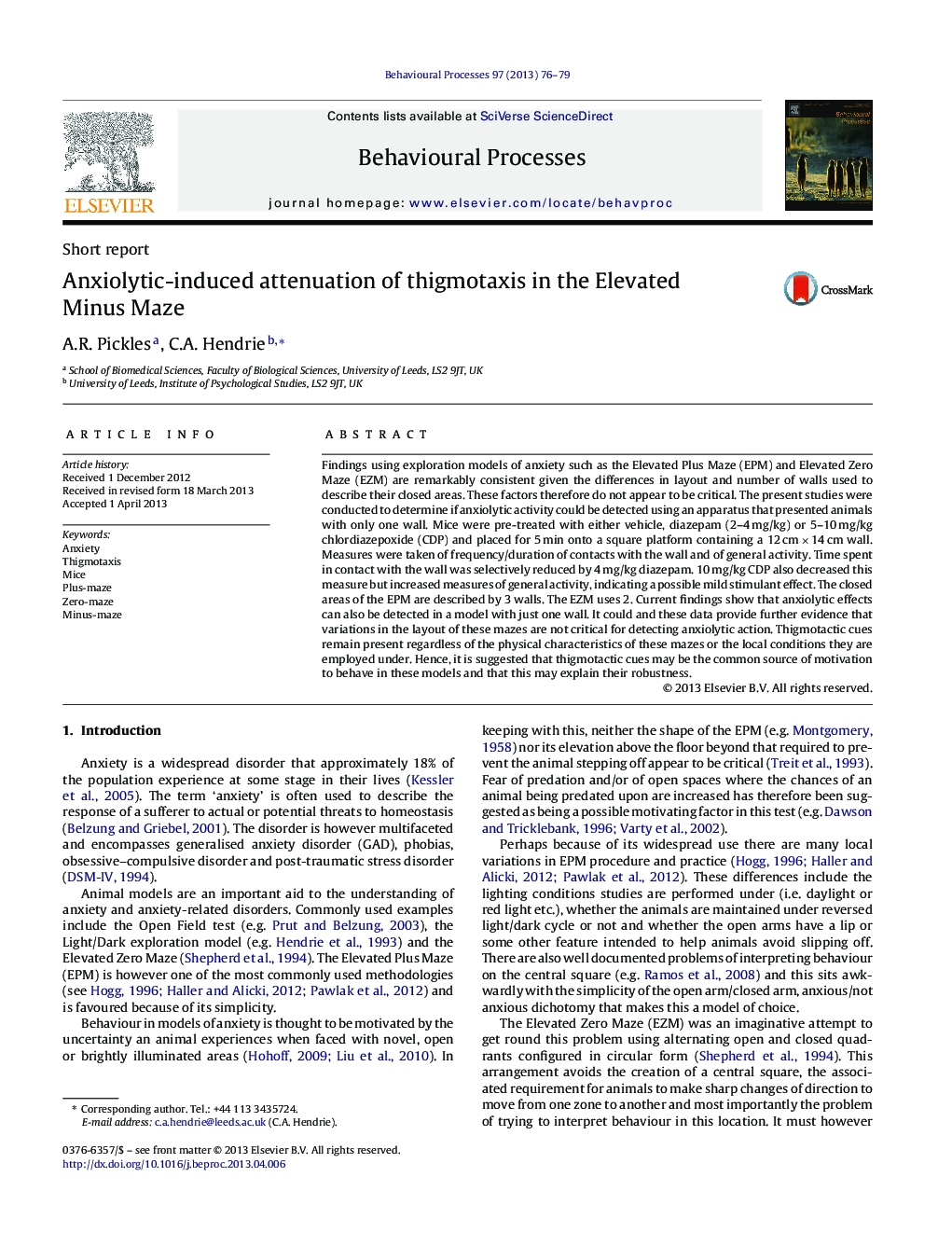| کد مقاله | کد نشریه | سال انتشار | مقاله انگلیسی | نسخه تمام متن |
|---|---|---|---|---|
| 2426892 | 1553182 | 2013 | 4 صفحه PDF | دانلود رایگان |

• The closed areas of the Elevated Plus Maze (EPM) are described by 3 walls, and by 2 walls in the Elevated Zero Maze (EZM).
• Studies conducted to determine if anxiolytic activity could be detected using apparatus that has only one wall.
• These data provide further evidence that variations in the layout of these mazes are not critical.
• Thigmotactic cues remain present regardless of physical characteristics of these mazes or conditions used under.
• Hence, thigmotactic cues may be source of motivation to behave in these models and that this could explain their robustness.
Findings using exploration models of anxiety such as the Elevated Plus Maze (EPM) and Elevated Zero Maze (EZM) are remarkably consistent given the differences in layout and number of walls used to describe their closed areas. These factors therefore do not appear to be critical. The present studies were conducted to determine if anxiolytic activity could be detected using an apparatus that presented animals with only one wall. Mice were pre-treated with either vehicle, diazepam (2–4 mg/kg) or 5–10 mg/kg chlordiazepoxide (CDP) and placed for 5 min onto a square platform containing a 12 cm × 14 cm wall. Measures were taken of frequency/duration of contacts with the wall and of general activity. Time spent in contact with the wall was selectively reduced by 4 mg/kg diazepam. 10 mg/kg CDP also decreased this measure but increased measures of general activity, indicating a possible mild stimulant effect. The closed areas of the EPM are described by 3 walls. The EZM uses 2. Current findings show that anxiolytic effects can also be detected in a model with just one wall. It could and these data provide further evidence that variations in the layout of these mazes are not critical for detecting anxiolytic action. Thigmotactic cues remain present regardless of the physical characteristics of these mazes or the local conditions they are employed under. Hence, it is suggested that thigmotactic cues may be the common source of motivation to behave in these models and that this may explain their robustness.
Journal: Behavioural Processes - Volume 97, July 2013, Pages 76–79